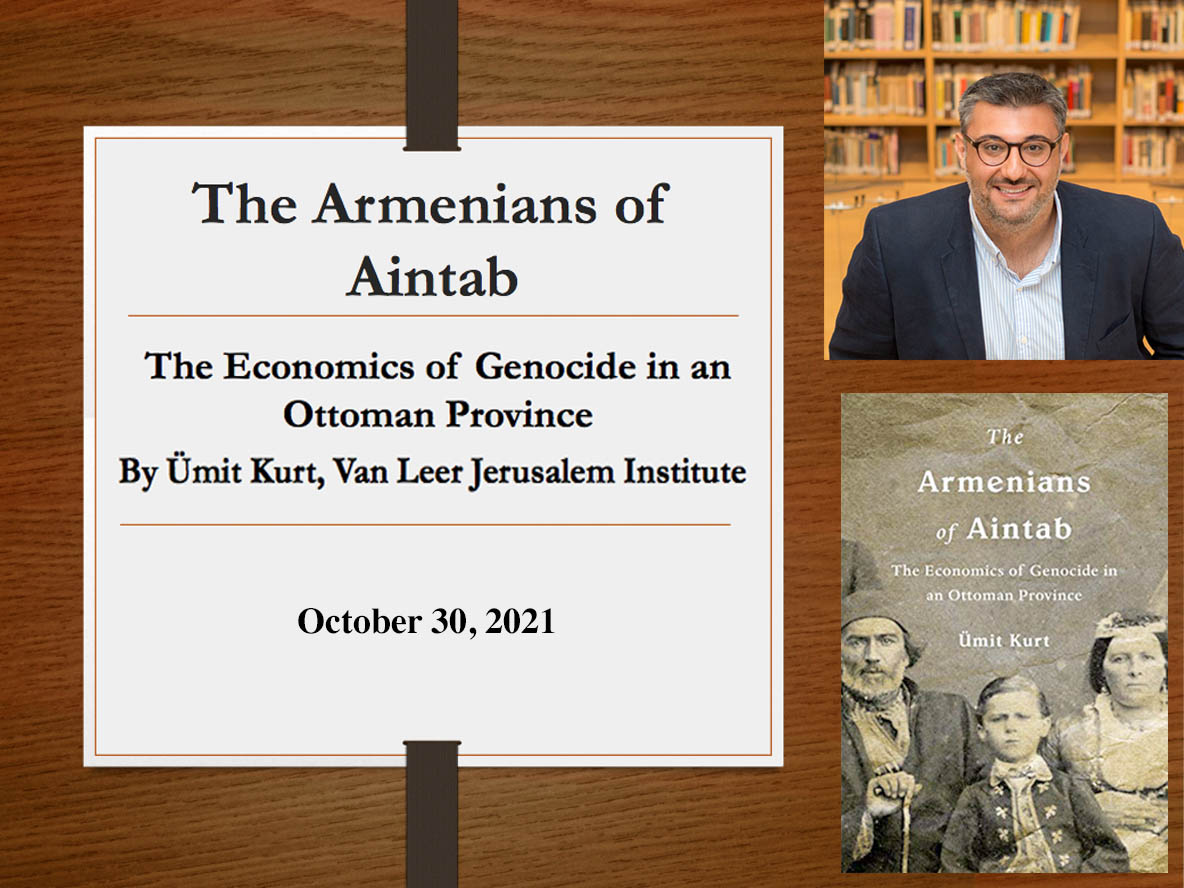
Arshak Abelyan
Staff Writer
“The base motives of their former neighbors, unfortunately, left some of the most indelible wounds, which more than a century later remain unhealed,” said Dr. Ümit Kurt when dis-cussing the economic motives behind the Armenian Genocide.
Dr. Kurt, a historian who studies the late Ottoman Empire, has a particular focus on the transformations of imperial structures and their role in constituting the republican regime. He presented an over-view of his newly published book, The Armenians of Aintab: The Economics of Genocide in an Ottoman Province (Harvard University Press, 2021) on Saturday, October 30, as part of the Armenian Studies Program Fall 2021 Lecture Series. Berberian Coordinator of the ASP Prof. Barlow Der Mugrdechian introduced Dr. Kurt, who was a Kazan Visiting Professor at Fresno State in Fall of 2018.
Dr. Kurt’s book focuses on the economic dimension of the Genocide as it affected the Aintab Armenians, who were forcibly deported, thus benefiting their neighbors. According to Dr. Kurt, the inspiration for writing this book came about through his learning of the story of Nazar Nazaretian.
Dr. Kurt was going to meet a friend at the “Papirus” café in his hometown of Gaziantep (Aintab). Upon his arrival, he was astonished by the exotic appearance of the architectural work of the café. He approached the owner to compliment him and asked, “How did you obtain this place?” The owner explained that he inherited the structure from his grandfather and that Armenians once lived there. Dr. Kurt learned that the building was originally owned by Nazar Nazaretian. Dr. Kurt stated that he no longer refers to it as the Papirus café, but rather the house of Nazaretian.
“Properties belonging to Ottoman Armenians were seized through various laws and other legal regulations passed by the Committee of Union and Progress government and later the rank and file of the Republican regime and both governments concocted ways of making this illegal process look legitimate under the veil of the law,” stated Dr. Kurt.
Under one specific law, Armenians were not allowed to sell, rent, or transfer any property. Abandoned property laws and liquidations also made it easier for the Committee of Union and Progress and many of the Muslim elite to be able to acquire property and resources under a legalized regime of plunder.
The Armenians of Aintab owned approximately six thou-sand residential homes and seven thousand parcels of land. Dr. Kurt pointed out that many of the transactions were used to meet the needs of refugees and immigrant Muslims. He utilized primary sources and archival materials to investigate what happened to these properties.
Not everything went as planned for Dr. Kurt in his attempts to obtain the information needed to understand and investigate these events.
“Over the course of my one and a half years of research in the Ottoman Prime Ministerial archives, all my requests to see these records were denied or turned away,” said Dr. Kurt.
Dr. Kurt concluded the discuss-ion of his book by pointing out that his insight is just a small part of the whole story and that there are still many questions that have been left unanswered. Much more research is needed to unlock the full picture of the events that transpired during the Armenian Genocide.
“My book is the story of Aintab Armenians, who were torn away from their homes, neighborhoods and the city where they were born and raised… so this is the account of how their material and spatial wealth changed hands and was transformed,” concluded Dr. Kurt.
 Hye Sharzhoom Armenian Action
Hye Sharzhoom Armenian Action